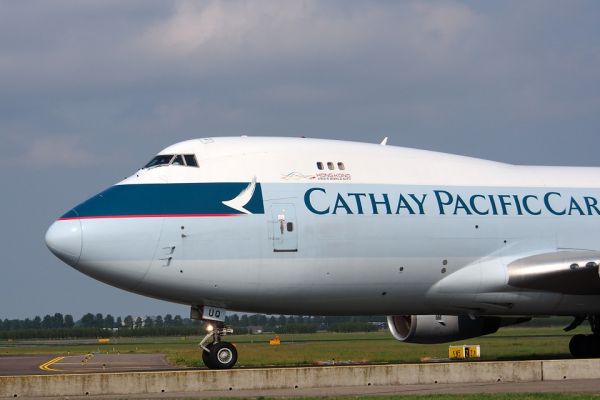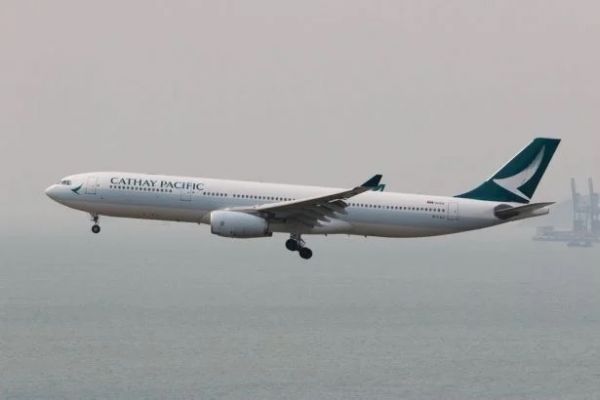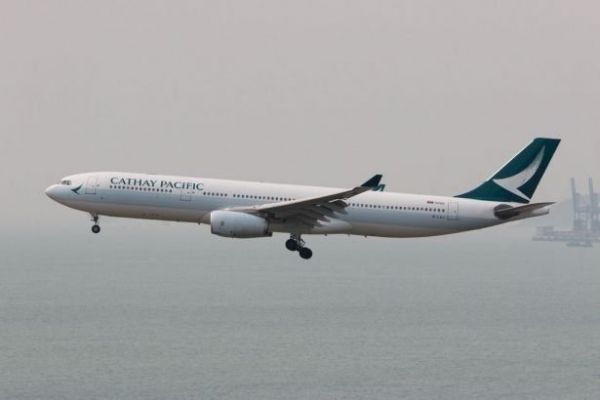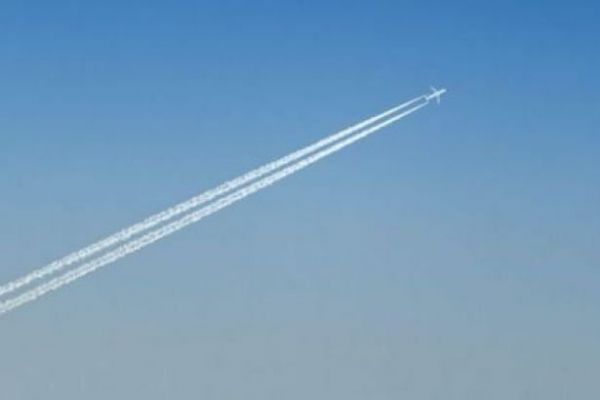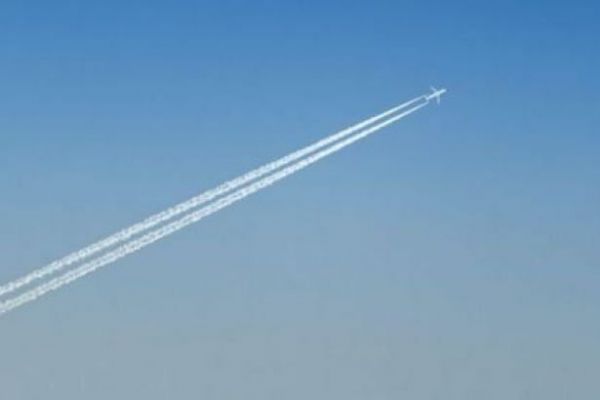Cathay Pacific Airways Ltd. reported a surprise profit in the second half of 2017, with a pick-up in cargo and premium-travel demand helping narrow the full-year net loss to HK$1.26 billion ($161 million). That’s well below analysts’ expectations for a loss of HK$2.26 billion, based on estimates compiled by Bloomberg.
Ten months in the job, Chief Executive Officer Rupert Hogg can reassure investors that a rebound in business travel and cargo demand have contained the damage caused by past fuel-hedging contracts gone awry. Hogg also has cut 600 jobs as part of a three-year revamp, and taken delivery of newer aircraft to help Cathay become more competitive against low-cost and Chinese mainland carriers.
“The outlook for our cargo business is positive,” Chairman John Slosar said in a statement Wednesday (March 14). “Our priorities for 2018 are our transformation program, changing the way that we work so as to better contain costs which will strengthen our passenger business further.”
Cathay ferried 11% more cargo for the full year, while the number of passengers carried increased 1.4%. Cargo yield -- a key indicator of profitability reflected by earnings from carrying one ton per kilometer -- jumped 11%. A slower rate of decline in passenger yields also supported the improved result.
“The surprise in the second-half profit was due to cargo business,” said Mohshin Aziz, an analyst at Maybank Investment Bank Bhd. in Kuala Lumpur. “Cargo performed far better than what was expected. Passenger yield is still in pain.”
Cathay recorded profit of HK$792 million for the second half, helped by increased earnings from associates including Air China Ltd., in which it owns 18%. The Hong Kong-based carrier posted a loss of HK$928 million in the second half of 2016.
Fierce competition from mainland Chinese carriers that offer non-stop routes to the US and Europe, making Hong Kong less attractive as a transit hub, pushed Cathay to its first back-to-back annual losses.
The focus is on transforming the business, with an aim to grow 4% a year until Hong Kong gets its third runway, CEO Hogg told reporters on Wednesday after the earnings announcement. “We are bullish about the market demand here,” he said, adding he found the yield trends encouraging. Paul Loo, the chief commercial officer, ruled out further job cuts.
Shares of Cathay, which jumped as much as 3.2% after the earnings were announced, erased the gains and ended the day unchanged in Hong Kong.
“Cargo is highly cyclical and they are heavily dependent on cargo,” said K. Ajith, an analyst at UOB Kay Hian Pte in Singapore. “There’s concern whether this is sustainable” given uncertainties due to a possible trade war after the U.S. increased tariffs on aluminum and steel, he said.
Cathay said losses from wrong-way fuel bets amounted to HK$6.4 billion for the whole of last year, narrowing from HK$8.46 billion in 2016.
Fuel is the largest component of an airline’s costs in Asia. Cathay has been booking losses on its hedges after crude oil unexpectedly tumbled from more than $100 a barrel in 2015. The carrier has since shortened the contracts’ lock-in period to two years from four.
As part of the three-year plan kicked off last year, Cathay is on track to cut costs by HK$4 billion, Slosar said in January. The company has been in talks with its pilots over compensation, frozen pay for senior staff, and increased the number of economy seats on some planes as part of its efforts.
